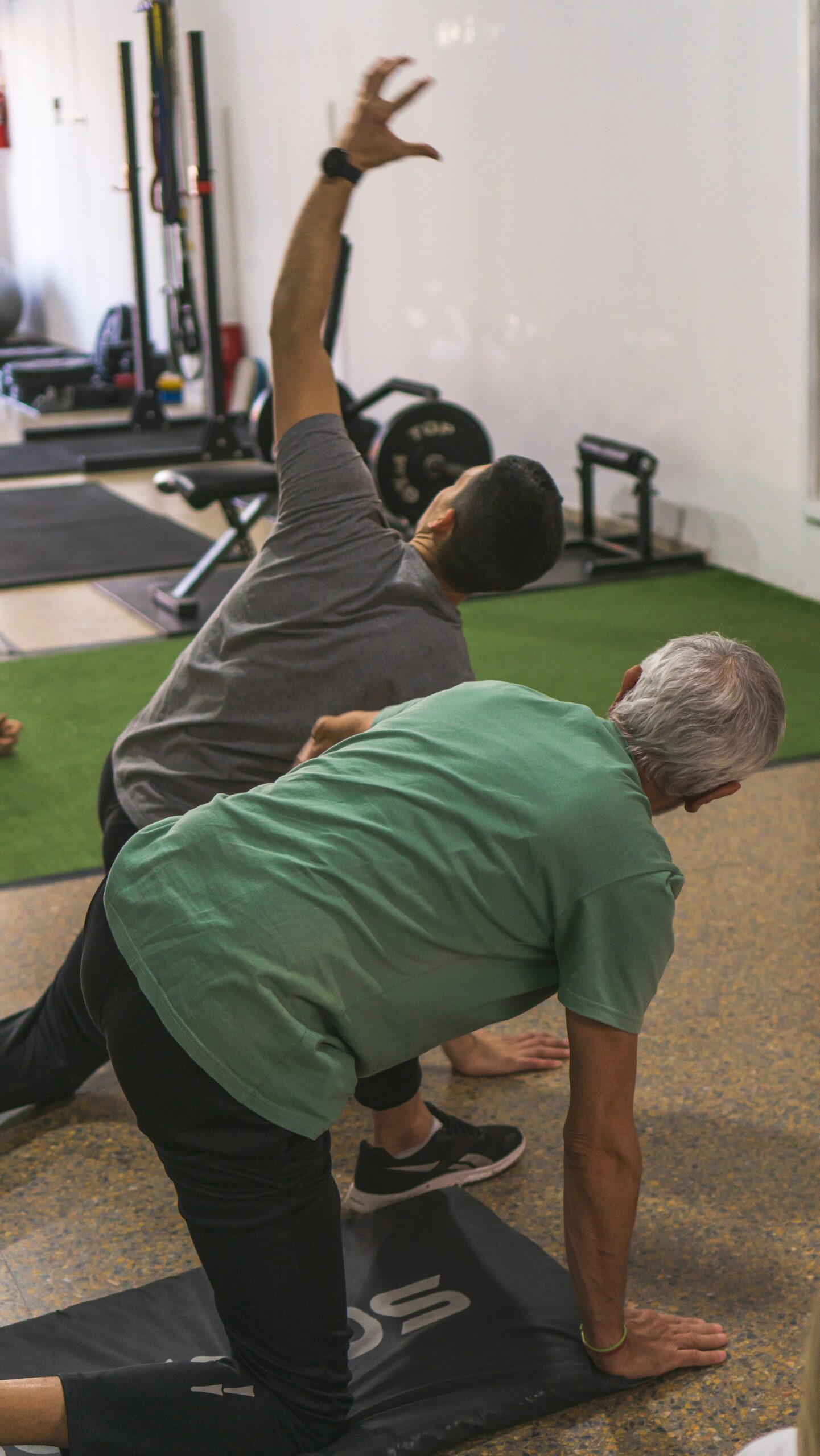Lasting Pain Relief Through Mobility and Flexibility Exercises: Unlock Better Movement and Comfort


Photo by Federico Faccipieri on Unsplash
Introduction: Why Mobility and Flexibility Matter for Pain Relief
Chronic pain and stiffness can undermine your daily comfort, limiting physical activity and lowering your quality of life. Fortunately, evidence shows that regular mobility and flexibility exercises offer an accessible, drug-free path to pain relief. These exercise routines not only help reduce discomfort, but also improve joint health, restore movement, and prevent future injuries. Whether you face joint pain from arthritis, muscle tightness from a sedentary lifestyle, or general aches, incorporating mobility and flexibility work into your routine can make a measurable difference [1] [2] .
Understanding Mobility and Flexibility
Mobility refers to the ability of a joint to move through its full range of motion, while flexibility describes the length and pliability of muscles and connective tissue. Both are essential for healthy movement patterns. When mobility or flexibility is limited, muscles and joints compensate, often leading to pain, stiffness, and a higher risk of injury. Research from health professionals and physical therapists confirms that targeted exercises addressing these limitations can ease pain and restore function [3] .
How Mobility Exercises Relieve Pain
Mobility exercises directly address the cause of many common pain complaints:
- Decreased stiffness: Gentle, controlled movements keep joints supple and reduce discomfort, especially in people with sedentary routines or arthritis [1] .
- Improved circulation: Movement increases blood flow to sore areas, which supports healing and reduces inflammation.
- Strengthened muscles: Supporting muscles take pressure off painful joints, lessening strain and reducing pain over time [2] .
Clinical studies show that patients participating in structured mobility programs experience significant reductions in both acute and chronic pain, sometimes eliminating the need for medication [3] .
Flexibility Training for Lasting Pain Relief
Flexibility work stretches the muscles and connective tissues, helping to relieve tension that often causes or worsens pain. Dynamic and static stretching techniques can be tailored to your needs. For example, people with low back pain may benefit from hamstring and hip flexor stretches, while those with neck or shoulder tension should focus on the upper back and chest.
According to physical therapists, regular flexibility training supports:
- Reduced muscle tightness and soreness [5]
- Improved posture and alignment, which in turn alleviates compensatory pain
- Greater joint range of motion, making daily activities less painful
Therapists recommend integrating stretching into your daily routine and adjusting exercises based on your unique flexibility needs and pain triggers.
Preventing Injuries Through Regular Mobility Work
In addition to pain relief, mobility and flexibility exercises are foundational for injury prevention . Regular practice enhances coordination, balance, and awareness of body movement, all of which lower the risk of strains, falls, and overuse injuries. This is crucial for aging adults, athletes, and anyone recovering from injury or surgery [1] .
Key benefits include:
- Enhanced body awareness: Teaches you to recognize and avoid risky or painful movements
- Stronger supporting muscles: Stabilize joints and absorb stress
- Improved balance: Reduces chances of falls, particularly in older adults [2]
Physical therapists often use individualized mobility routines as part of post-injury or post-surgery rehabilitation, gradually increasing difficulty as strength and range of motion improve.
Step-by-Step: How to Start a Mobility and Flexibility Routine
Embarking on a pain relief journey with mobility and flexibility work can be straightforward. Here is a step-by-step guide to help you begin safely and effectively:
- Consult a health professional: Before starting new exercises-especially if you have a chronic condition-consult a physician or physical therapist. They can guide you on safe exercises and tailor a plan to your needs [4] .
- Warm up gently: Begin with light movements (such as walking or arm circles) to increase circulation and prepare your joints.
- Focus on major joints: Prioritize exercises for the hips, shoulders, knees, and spine. Examples include hip circles, cat-cow stretches, and shoulder rolls.
- Incorporate multidirectional movements: Move joints through different planes (forward, backward, side-to-side) to build comprehensive mobility [5] .
- Stretch consistently: Aim for at least 10 minutes of stretching daily, holding each stretch for 20-30 seconds without bouncing.
- Monitor pain levels: Exercises should not cause sharp pain. If you experience discomfort, modify the movement or seek guidance from a health professional.
- Progress gradually: As mobility improves, introduce more challenging stretches or increase the range of motion to continue making gains.
For additional support, you may wish to search for certified physical therapists or rehabilitation specialists in your area, or ask your primary care provider for a referral to a physical therapy clinic.
Real-World Examples and Success Stories
Many individuals have experienced significant relief from chronic pain by making mobility and flexibility exercises a daily habit. For example, patients with arthritis who implemented gentle stretching and joint mobility routines reported less morning stiffness and improved ability to perform daily tasks [4] . Athletes recovering from injuries have used targeted mobility drills to regain function and prevent re-injury, while older adults practicing balance and coordination exercises have seen a reduction in falls.

Photo by Shivam Tiwari on Unsplash
One common case is a desk worker suffering from lower back pain due to prolonged sitting. By performing daily hip and spinal mobility exercises, they reported decreased pain and improved energy within a few weeks. Another example: an older adult with limited shoulder range of motion who, after consistent stretching and movement routines, regained the ability to reach overhead and carry groceries comfortably.
Overcoming Challenges and Staying Motivated
Sticking to a new movement routine can present challenges, such as time constraints, discomfort, or uncertainty about proper technique. To overcome these barriers:
- Set realistic goals: Start small and celebrate incremental progress.
- Use reminders: Schedule exercise sessions at the same time each day to build a habit.
- Seek support: Consider group classes or virtual guidance from a licensed physical therapist. Many rehabilitation centers and community health organizations offer group or individualized sessions.
- Track your progress: Keep a simple journal of your pain levels and mobility milestones to stay motivated.
If you experience persistent pain or new symptoms, consult a health professional promptly. Qualified therapists can offer personalized strategies, correct your form, and modify routines to maximize benefits and prevent injury.
Alternative and Complementary Approaches
Mobility and flexibility exercises can be combined with other pain-relief strategies for added benefit. Some people find that techniques such as heat therapy, massage, or low-impact aerobic exercise (e.g., swimming, cycling) further ease discomfort and enhance movement [2] [4] .
To explore these options, you can:
- Discuss complementary therapies with your primary care provider
- Search for local health centers that provide physical therapy, massage, or aquatic therapy
- Ask about insurance coverage for physical or occupational therapy services
Always ensure that any complementary approach is coordinated with your prescribed exercise plan to avoid conflicting treatments.
Accessing Resources and Getting Started
If you are ready to begin, here are practical steps to find resources and support:
- Contact your primary care provider and ask for a referral to a physical therapist specializing in pain relief and mobility issues.
- Search online for “licensed physical therapist near me” or visit the official American Physical Therapy Association website for a directory of qualified professionals.
- Check with your local hospital, rehabilitation center, or community health organization for group classes or one-on-one sessions.
- If you have health insurance, review your policy for coverage of physical therapy and ask your provider about any required pre-authorization steps.
Remember, you do not need to accept daily pain as inevitable. By starting a safe, consistent mobility and flexibility program, you can take proactive control over your comfort and well-being.
References
- [1] Analgesic Healthcare (2025). Benefits of Mobility Exercises.
- [2] The EmpowerU (2025). What Is Therapeutic Exercise and How It Affects Pain Relief and Mobility?
- [3] Summa Health (2021). Physical Therapy: 4 Benefits That Go Beyond Better Mobility.
- [4] Mayo Clinic (2023). Exercise helps ease arthritis pain and stiffness.
- [5] ACE Fitness (2023). The Surprising Benefits of Performing Daily Mobility Exercises.






